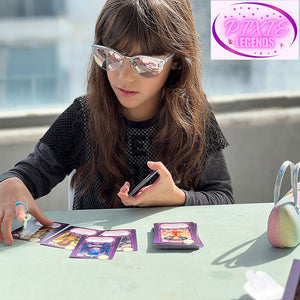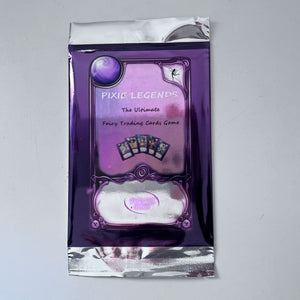The myth of Tooth Fairies is a staple of early childhood and is known throughout the Western world and in many Western cultures. According to traditional folklore, the Tooth Fairy will visit children's rooms to place their baby tooth under their pillow. However, the reality of Tooth Fairies is not as straightforward as the legend suggests. Let's take a close look at the myth. To begin with, the Fairy is a myth.
Tooth Fairies are believed in many countries
In the United Kingdom, children place their lost teeth under their pillows at night. The tooth-fairies visit these places to collect their lost teeth, and they are usually more prosperous than they were before they visited. But if you don't want to believe in the tooth fairy, you can always tell your child the truth. Hopefully, they will accept the truth!
If you think tooth fairies exist, you're not alone!
If you're wondering whether tooth fairies exist, you're not alone! You can find references to the fairies from ages ago. The first recorded appearance of the tooth fairy dates back to 1927. However, the oldest oral reference was to the late 1800s. It seems that the myth has survived through the centuries, even as the name has changed in recent decades.
There are many ways to interact with the tooth fairy
Some tooth fairies collect teeth to make money, while others collect them for different reasons. In Spanish/Hispanic countries, a mouse is said to be responsible for collecting lost teeth, and in French and Italian cultures, a sprite named Toof is believed to deliver lost teeth to children. While these characters are often based on a real story, there are also other similar figures such as Santa Claus and the Easter Bunny.
Some names of tooth fairies
The Fairy has many names. Some have a fairy's name, and a tooth fairy with this name is known as the Tooth Fairy. Whether or not a child knows the name of their Fairy, they can feel closer to them with a Tooth-Fairy Certificate. The name Caspian may be related to a famous Viking, and the word "Gary" is associated with a collector of teeth. If a child is fascinated with collecting teeth, she may be called the Tooth Fairy Gary. Another Gaelic name is Cein, which means ancient.
A female tooth fairy's name is not a necessity
Some people believe in tooth fairies and their mythical counterparts. There are many myths and legends about tooth fairy. There is also a common belief that teeth result from magical encounters with the tooth fairy. These events are often the result of a supernatural event that affects our lives. Regardless of the name of the Fairy, it's a wonderful symbol of happiness and beauty.
Some famous names of the tooth fairy
There are many stories surrounding tooth fairy names. Among them is the popular name Marilla (meaning shining sea') from Magyar folklore. Other choices include Nolana, meaning 'fairy,' Laila, 'night,' and Suelita, 'little lily.' Other names for tooth fairies include Faye (meaning 'fairy'), Ambrosine (meaning 'immortal'), and Niamh (from Gaelic).
Tooth Fairy encourages your child to brush their teeth daily
One way to encourage your child to take care of their teeth is to give them a letter from the Tooth Fairy. These tiny letters can be bought or made by parents. These priceless gifts are priceless and will help your child to take better care of their teeth. Another way to connect with the Tooth Fairy is to encourage your child to brush their teeth daily. You can use letters from your favourite fairy character or favorite toothbrush to remind your child that it is essential to keep a clean mouth.
There are a few stories about Tooth Fairies in different cultures
The story of the Tooth Fairy is based on folklore about the existence of a fairy who removes teeth. It is not valid, but there are a few stories about Tooth Fairies in different cultures. In some cultures, this Fairy has a human counterpart. For example, the French and Italian tooth fairy have a mouse. A person may not believe in a fairie's existence, but he can still communicate with him through his dreams and see things.
Some people believe that tooth fairy tales are based on myths
While many people believe in tooth fairy traditions, the idea is not universal. In some countries, the concept is common, but it varies from country to country. And some cultures are more literal than others. It is essential to keep in mind that the idea of a tooth fairy is an ideal one. It is because it represents a particular aspect of Fairy's world.
A tooth fairy is a fictional character who appears in fairy tales
The legend started in the 18th century when a fairy named La Bonne Petite Souris appeared. The story tells of a tiny creature transforming into a mouse and helping a good queen fight an evil king. The Fairy knocks out the king's teeth with the help of the mouse. The mice help the good queen defeat the evil king by collecting and storing these teeth. Their sole purpose is to steal baby teeth from children. Tooth fairies are not real people. They are tiny creatures whose sole purpose is to steal baby teeth from children and other creatures. This little fey is popular in Russia, Spain, and many Asian countries but has no connection with our personal lives. They may not know tooth fairy cultures, but they have a deep connection to the ones we love. If you've been a good kid, you'll never have a hard time finding a tooth fairy.
Fairies exist and can be seen in our everyday lives
While tooth fairies may have magical qualities, they are not real people. But, they do exist and can be seen in our everyday lives. We can't tell if they exist, but we can make our dreams come true. In other words, the Tooth Fairy exists. You can't stop the Tooth Fairy from visiting us! That's why she's a myth. Its existence is a fairy!









